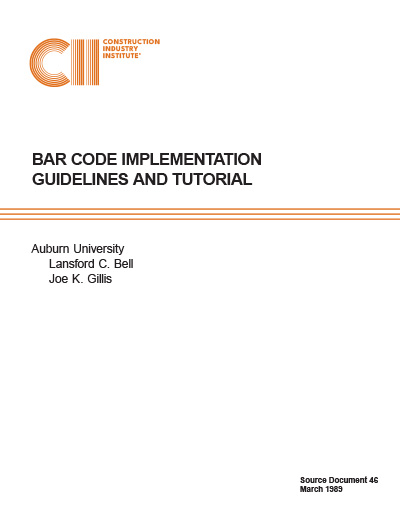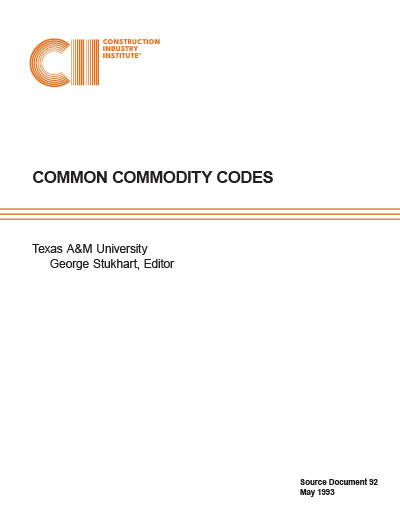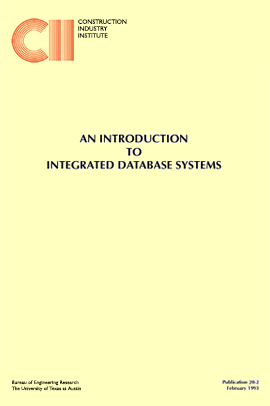
Bar Code Implementation Guidelines and Tutorial Part I: Guidelines - Part II: Tutorial
In February 1988 the Construction Industry Institute issued a source document titled “Bar Code Applications in Construction.” This source document summarized a research project that was conducted at Auburn University in 1987 under the direction of the CII Materials Management Task Force and a CII Bar Code Advisory Committee. The objective of the research was to examine the status of bar coding and other related automatic identification technologies in construction and other industries. The research also examined bar code related hardware and software components, and documented existing applications and resulting benefits of bar coding in construction.
In response to a growing interest in bar coding within CII member firms, a second research project was initiated in January 1988 to develop specific bar code implementation tools and guidelines. This second research project, the results of which are contained herein, was conducted at Auburn University under the direction of the CII Materials Management Task Force until its sunset date in August 1988, at which time it was transferred to the newly created Electronic Data Management Task Force.
Bar code technology is at present being successfully utilized by seven CII member firms. Many others are in various stages of the implementation planning process.
Bar coding is a simple concept. The technology has been adopted on an almost routine basis in other industries. Furthermore, bar coding can easily be integrated into existing computer systems. A brief overview of the technology is presented in Chapter II.
A number of specific construction related bar code applications were presented in the previously issued CII source document report. Discussions of what the authors believe to be the applications that show the greatest potential for immediate implementation are described in Chapter III.
The implementation of bar code technology is a relatively straightforward process. Contained in Chapter IV are recommended sources of educational materials and guidelines for selecting hardware, software, and label vendors.
As part of this current research effort, four case study site visits were conducted. The systems selected and the resulting costs and benefits associated with the case studies are discussed in Chapter V.
Bar coding is essentially a means of providing rapid, error-free data entry into a computer system. When the system is implemented using a portable programmable data terminal, additional benefits in the form of error-free data entry at locations remote from the host computer result. In an effort to demonstrate basic bar code concepts and illustrate suggested applications, a working bar code tutorial was developed as part of this research. The tutorial, which consists of six menu driven programs and corresponding data files, is distributed on two IBM PC compatible diskettes. The use of the tutorial and its bar coded data entry forms is described in a user’s manual that is contained in Part II of this report.
The research described herein was conducted for the purpose of providing guidelines and educational materials for persons with little or no experience with bar code technology. This report will hopefully stimulate discussions between a wide range of potential system users, and subsequently lead to the implementation of cost saving data processing applications.
SD-46, BarCode Implementation Guideline and Tutorial
Provides guidelines and educational materials for persons with little or no experience with bar code technology, and is intended to stimulate discussions between a wide range of potential system users, and subsequently lead to the implementation of cost saving data processing applications.



